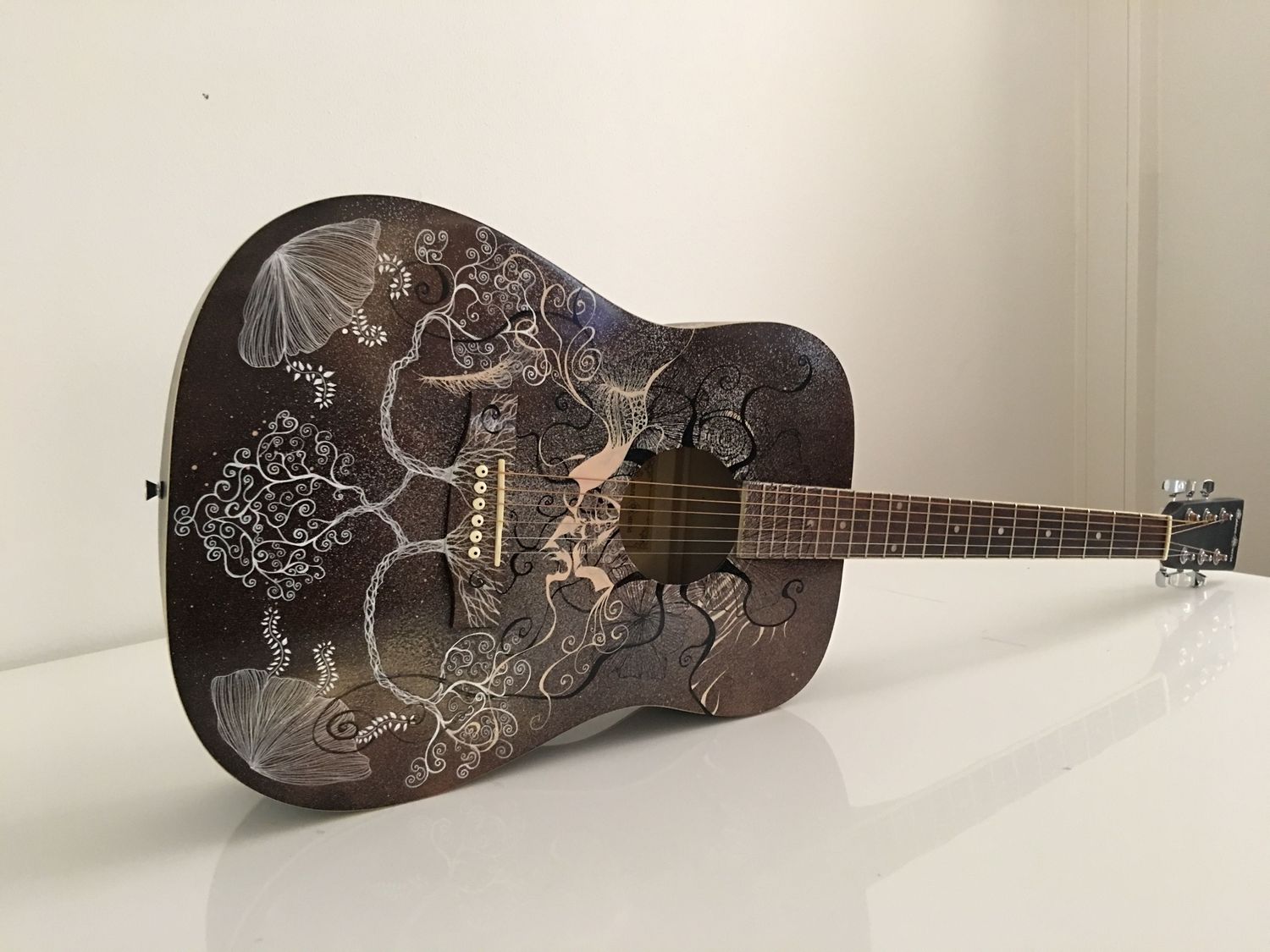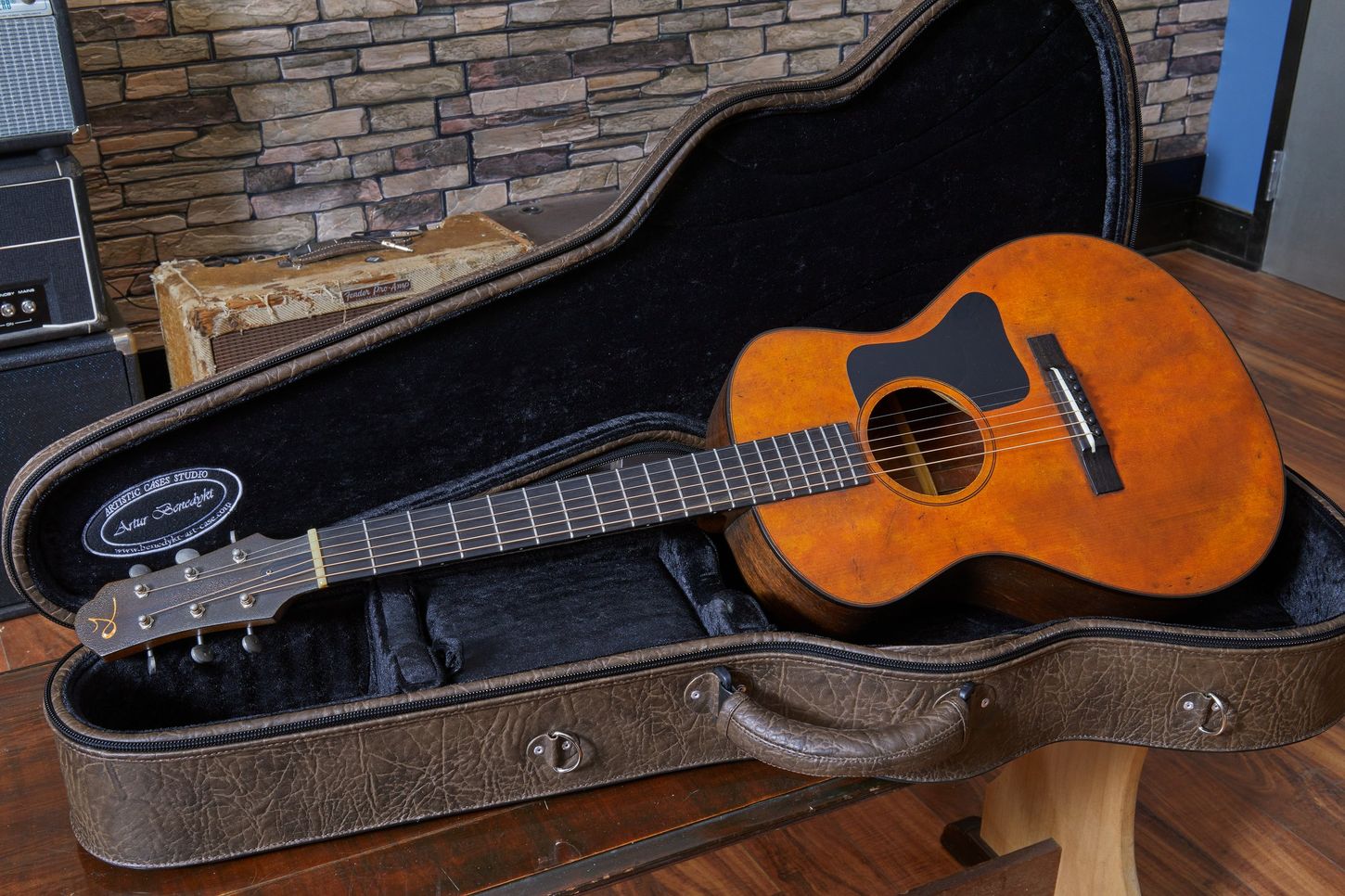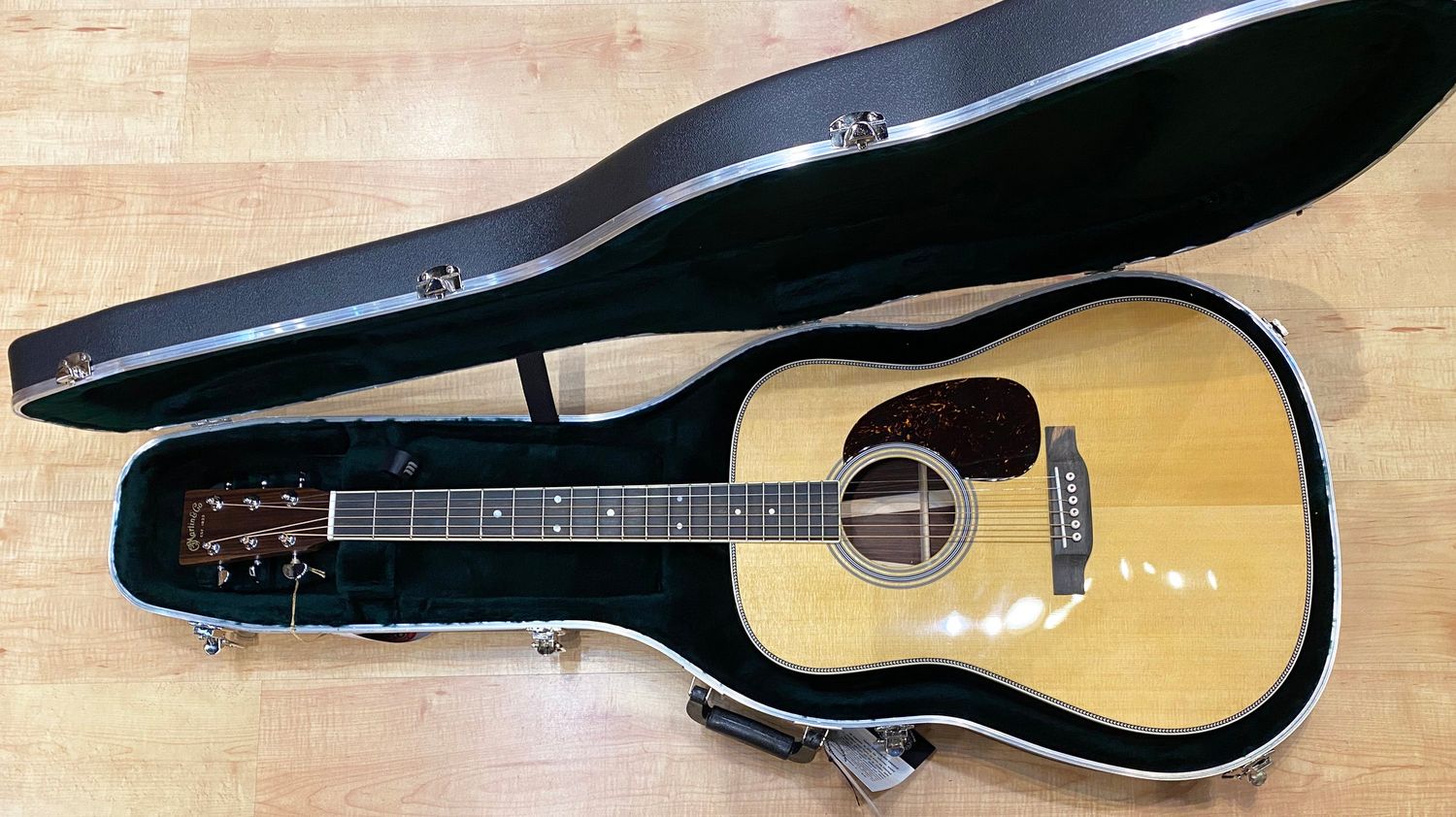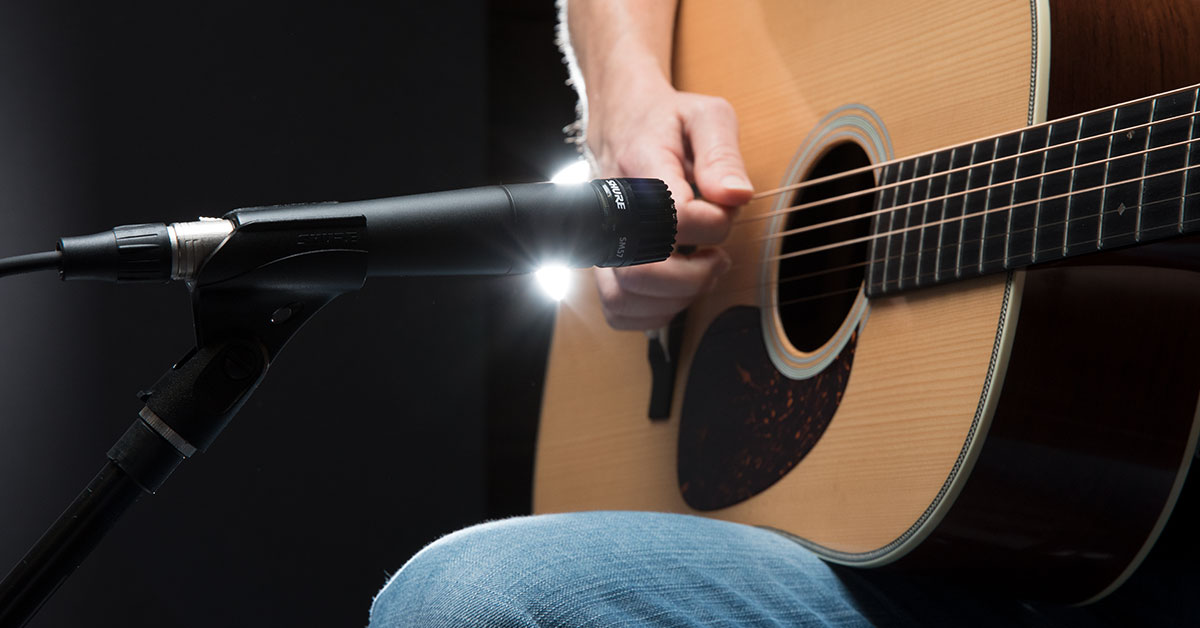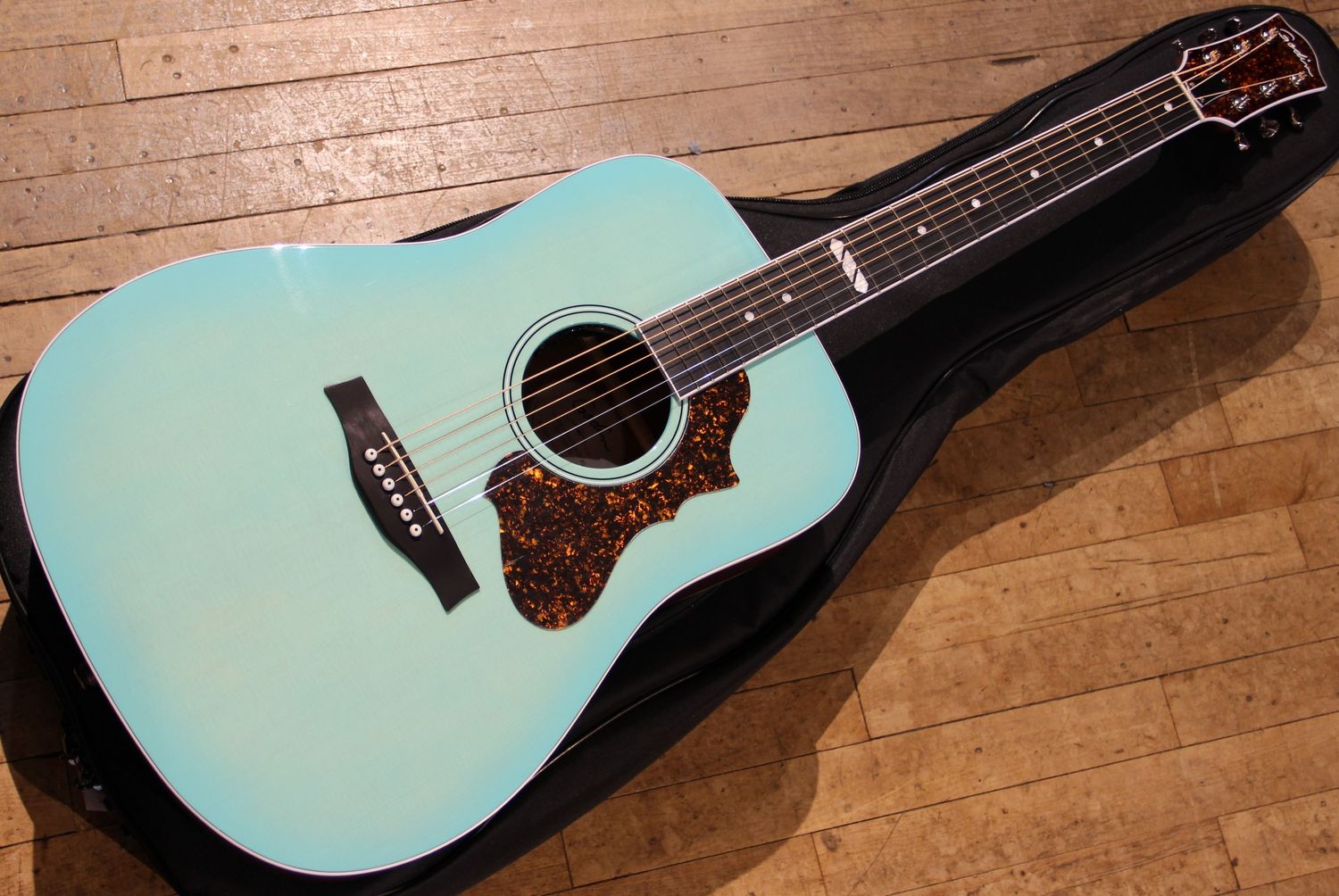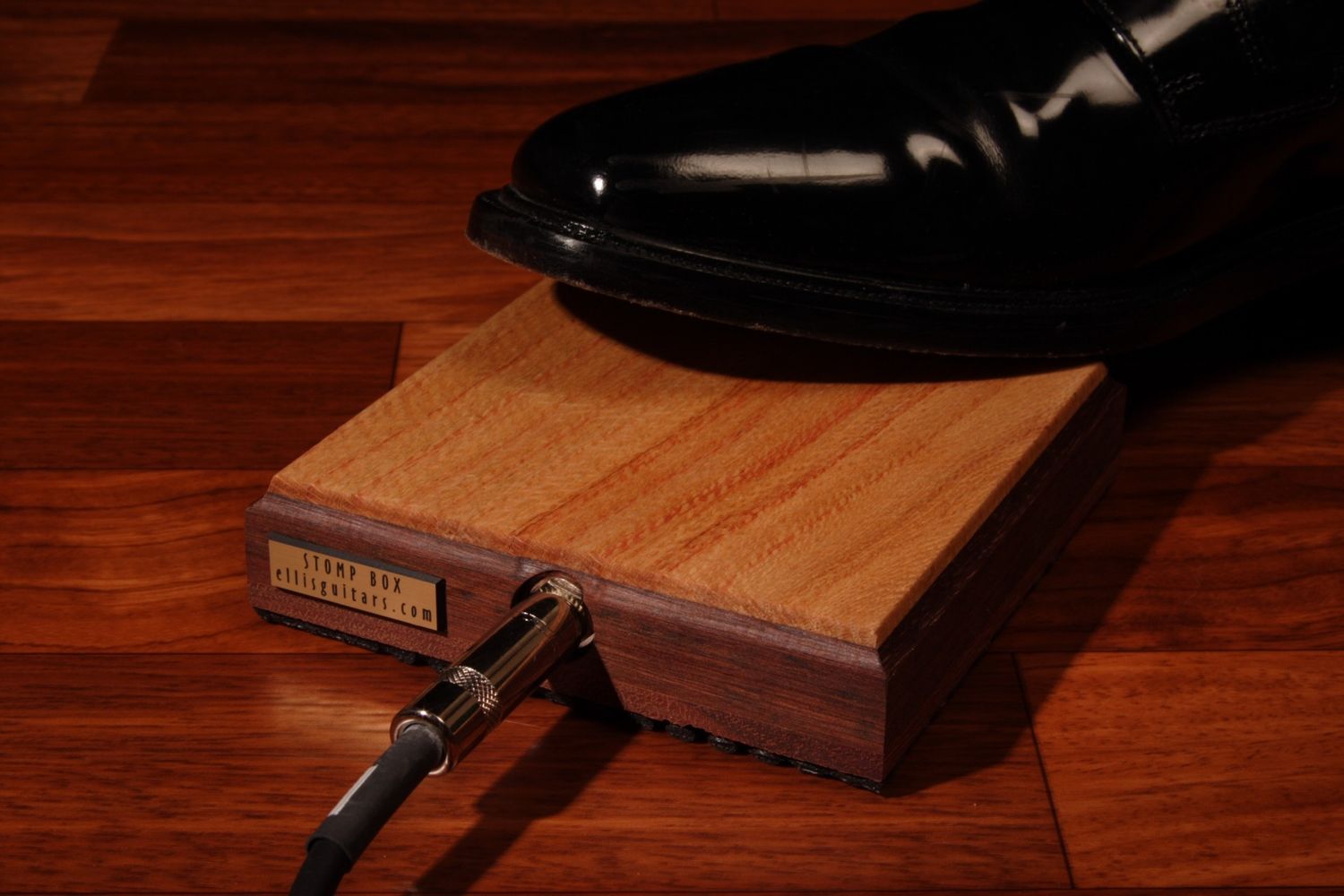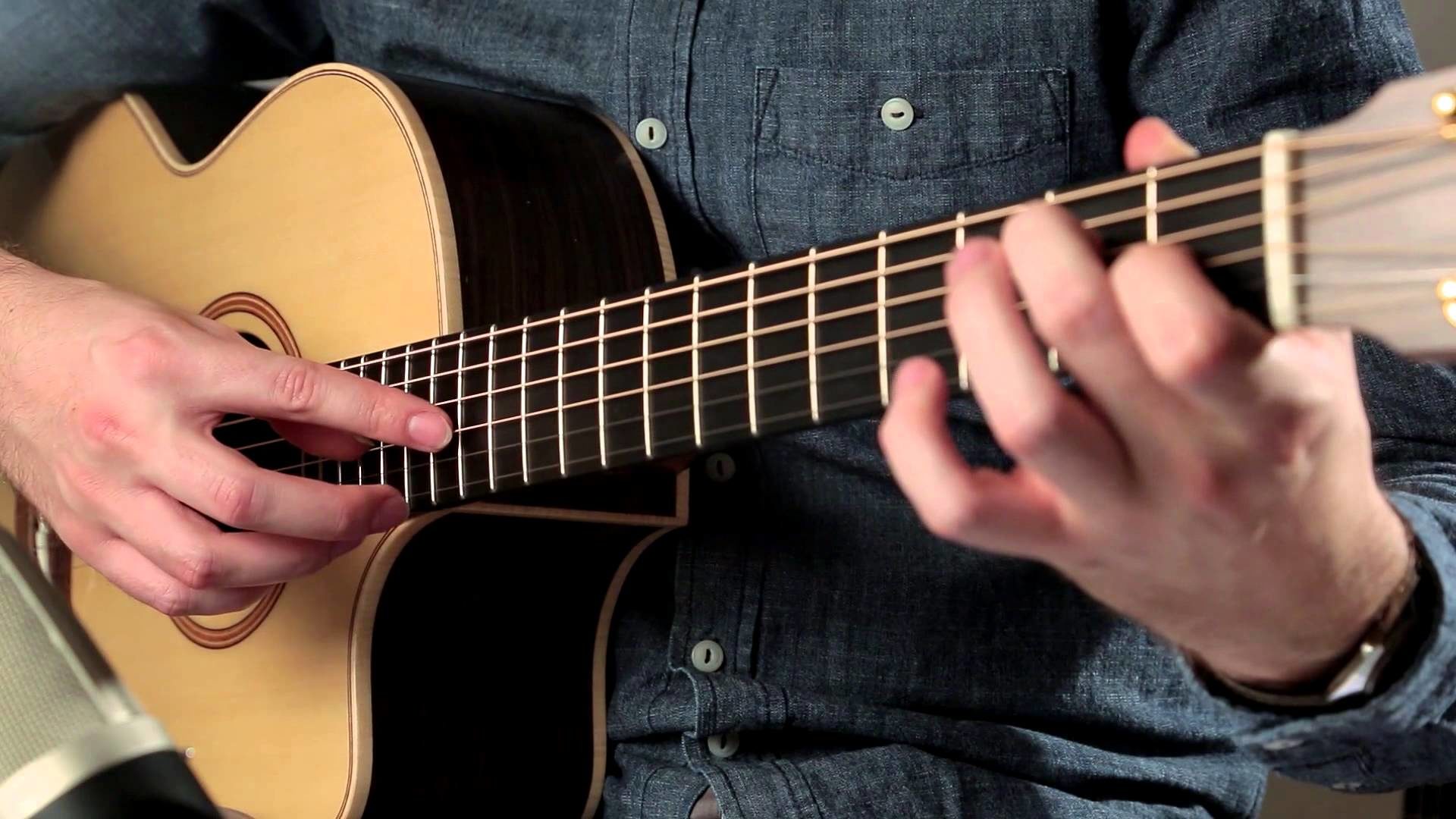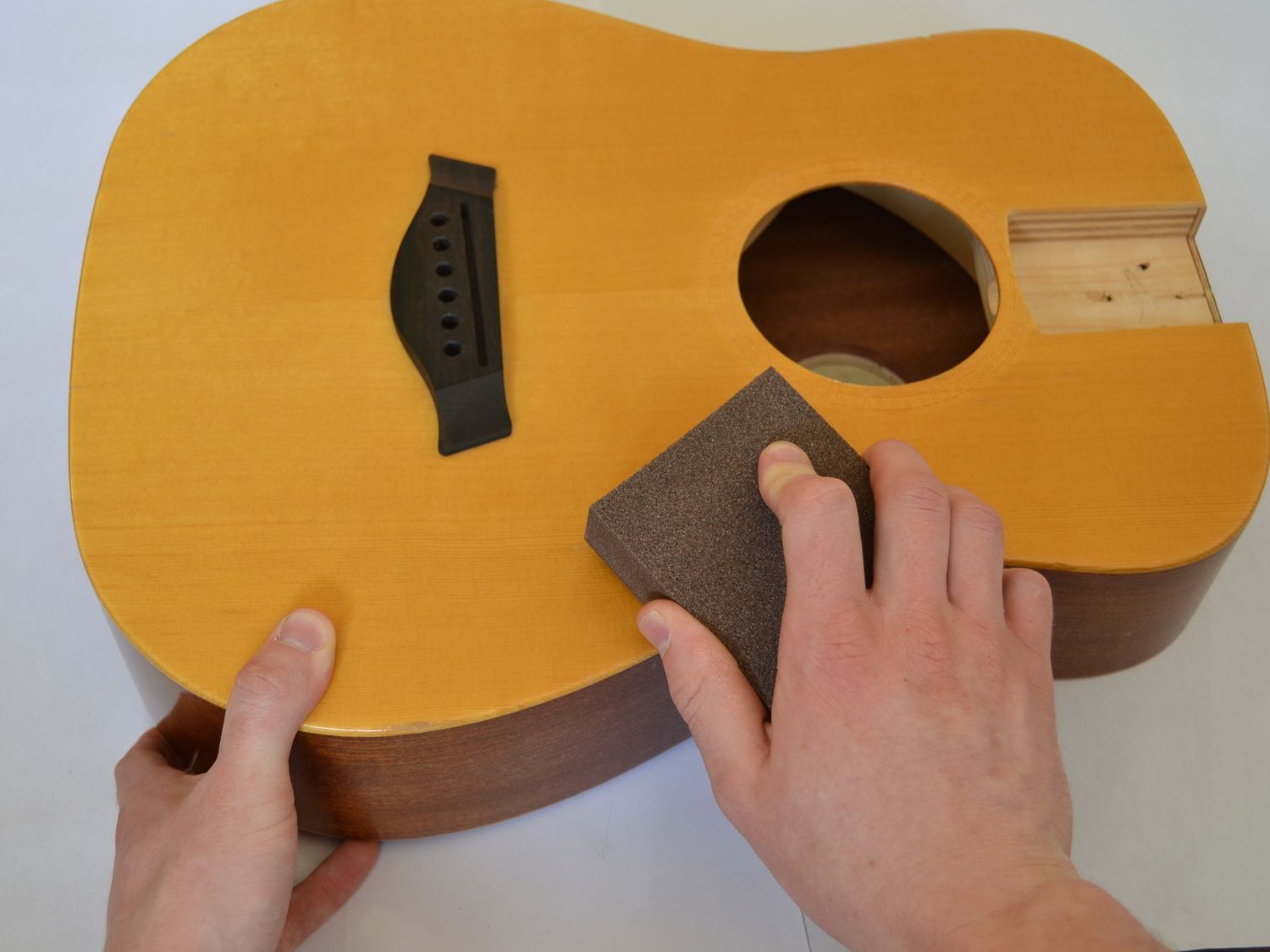Home>Production & Technology>Acoustic>How To Make An Acoustic Guitar


Acoustic
How To Make An Acoustic Guitar
Published: March 11, 2024
Learn how to make an acoustic guitar from scratch with our step-by-step guide. Discover the essential tools and techniques for crafting your own beautiful instrument.
(Many of the links in this article redirect to a specific reviewed product. Your purchase of these products through affiliate links helps to generate commission for AudioLover.com, at no extra cost. Learn more)
Table of Contents
Introduction
Crafting an acoustic guitar is a labor of love that combines artistry, precision, and a deep understanding of acoustics. Each step in the process, from selecting the right wood to fine-tuning the instrument, contributes to the creation of a unique and resonant masterpiece. In this comprehensive guide, we will delve into the intricate process of handcrafting an acoustic guitar, exploring the meticulous steps that culminate in the creation of a harmonious instrument.
The art of guitar making is a time-honored tradition that dates back centuries, with skilled luthiers passing down their expertise through generations. While the process may seem daunting to the uninitiated, it is a deeply rewarding endeavor that allows for the expression of creativity and the fulfillment of a passion for music. Whether you are a seasoned craftsman or a novice enthusiast, embarking on the journey of building an acoustic guitar promises a profound sense of accomplishment and a newfound appreciation for the instrument.
Throughout this guide, we will unravel the complexities of guitar construction, shedding light on the intricate decisions and techniques that shape the instrument's tonal qualities and aesthetic appeal. From selecting the finest tonewoods to carving the neck and fretboard with precision, each stage of the process demands unwavering attention to detail and a keen understanding of acoustic principles.
As we embark on this journey, we will explore the significance of wood selection, the art of designing the guitar body, the intricacies of constructing the neck and headstock, and the meticulous process of installing the fretboard and frets. Additionally, we will delve into the critical steps of attaching the bridge and saddle, applying the perfect finish, and installing the tuning pegs, all of which contribute to the guitar's resonance and playability.
By the end of this guide, you will have gained a comprehensive understanding of the craftsmanship and expertise required to create a truly exceptional acoustic guitar. Whether you aspire to build your own instrument or simply seek to deepen your knowledge of guitar construction, this exploration of the art and science behind acoustic guitars promises to be an enlightening and enriching experience.
Choosing the Right Wood
Selecting the right wood is a pivotal decision in the construction of an acoustic guitar, as it profoundly influences the instrument's tone, resonance, and aesthetic appeal. The tonal characteristics of the wood, coupled with its structural integrity, play a crucial role in defining the sonic signature of the guitar. Luthiers meticulously evaluate various wood species, considering their unique properties and suitability for specific components of the instrument.
Soundboard:
The soundboard, also known as the top, is one of the most critical elements affecting the guitar's tonal quality. Spruce, particularly Sitka, Engelmann, and Adirondack varieties, is a popular choice for soundboards due to its exceptional strength-to-weight ratio and resonance. Cedar is also favored for its warm and mellow tonal qualities, making it a preferred alternative for certain playing styles and musical genres.
Back and Sides:
The back and sides of the guitar contribute significantly to its tonal projection and resonance. Rosewood, known for its rich, deep tones and pronounced sustain, is a favored choice for the back and sides. Mahogany, revered for its balanced tonal characteristics and midrange emphasis, is another popular option that imparts a warm and focused sound to the instrument.
Neck and Fretboard:
When selecting wood for the neck and fretboard, durability and stability are paramount considerations. Mahogany and maple are commonly chosen for neck construction, offering robustness and resonance. Ebony and rosewood are prized for fretboards, providing smooth playing surfaces and enhancing the articulation of notes.
Bracing:
The internal bracing of the guitar, crucial for supporting the soundboard and shaping its responsiveness, is often crafted from spruce or cedar. The choice of bracing pattern and wood species significantly influences the guitar's tonal dynamics, responsiveness, and overall character.
In essence, the selection of tonewoods is a nuanced and deeply personal aspect of guitar making, with each wood species imparting its distinct sonic fingerprint to the instrument. By carefully considering the tonal properties, structural attributes, and visual appeal of different woods, luthiers can craft acoustic guitars that resonate with unparalleled clarity, warmth, and character.
Designing the Guitar Body
Designing the body of an acoustic guitar is a meticulous process that encompasses both artistic vision and acoustic precision. The shape, size, and bracing of the guitar body profoundly influence its tonal characteristics, projection, and overall playability. Luthiers carefully consider a myriad of factors as they conceptualize and craft the body, aiming to achieve a harmonious balance between aesthetics and acoustic performance.
Body Shape and Size:
The choice of body shape, whether it be a classic dreadnought, a versatile grand auditorium, or a resonant jumbo, significantly impacts the guitar's tonal profile. Each body style offers distinct tonal attributes, with variations in bass response, midrange prominence, and overall volume. Additionally, the size of the body directly influences the instrument's projection and resonance, with larger bodies typically producing more robust and resonant tones.
Bracing Patterns:
The internal bracing of the guitar body plays a pivotal role in shaping its responsiveness and tonal dynamics. Luthiers meticulously design and position the bracing to achieve optimal structural integrity and tonal balance. Various bracing patterns, such as X-bracing, scalloped bracing, and lattice bracing, offer unique tonal signatures, influencing the guitar's sustain, responsiveness, and tonal complexity.
Soundhole Design:
The design and placement of the soundhole are critical considerations in the body design process. The size, shape, and placement of the soundhole directly impact the guitar's resonance, air movement within the body, and tonal projection. Luthiers carefully craft and position the soundhole to optimize the instrument's acoustic properties while complementing the overall aesthetic appeal of the guitar.
Material Selection:
The choice of wood for the body construction significantly contributes to the guitar's tonal characteristics and visual allure. Luthiers meticulously select tonewoods, considering their resonance, density, and aesthetic qualities. The pairing of tonewoods for the top, back, and sides is a deliberate process aimed at achieving a balanced tonal spectrum, rich harmonics, and stunning visual appeal.
Aesthetic Details:
Beyond the acoustic considerations, luthiers infuse the guitar body with artistic embellishments and ornate details, such as binding, purfling, and inlay work. These intricate details not only enhance the visual allure of the instrument but also reflect the luthier's craftsmanship and attention to detail, elevating the guitar into a work of art.
In essence, designing the guitar body is a multifaceted endeavor that demands a deep understanding of acoustic principles, an eye for aesthetic harmony, and a profound appreciation for the art of lutherie. By carefully balancing acoustic precision with artistic expression, luthiers breathe life into the guitar body, shaping an instrument that resonates with captivating tonal nuances and timeless beauty.
Constructing the Neck and Headstock
Crafting the neck and headstock of an acoustic guitar is a meticulous process that demands precision, structural integrity, and a keen understanding of ergonomic design. The neck serves as the primary interface between the player and the instrument, dictating playability, comfort, and tonal transfer. Meanwhile, the headstock not only houses the tuning pegs but also contributes to the guitar's visual appeal and overall balance.
Neck Construction:
The construction of the neck begins with the selection of high-quality wood renowned for its stability, resilience, and tonal properties. Mahogany and maple are commonly favored for their strength and tonal resonance, providing a solid foundation for the neck. Laminating multiple pieces of wood, often in a "scarf joint" configuration, enhances the neck's strength and minimizes the risk of warping or bending over time.
Luthiers meticulously carve the neck to achieve the desired profile, carefully considering factors such as neck width, depth, and taper. The shaping of the neck significantly influences the instrument's playability, allowing for comfortable chord transitions and effortless fretting. Additionally, the integration of a truss rod, a reinforcing metal rod embedded within the neck, enables precise adjustments to the neck's curvature, ensuring optimal playability and stability.
Headstock Design:
The headstock, a defining visual element of the guitar, is meticulously crafted to complement the instrument's aesthetic and functional aspects. Luthiers carefully shape the headstock, often incorporating elegant curves and ornate details to enhance its visual allure. The design of the headstock not only serves as a canvas for artistic expression but also plays a role in maintaining the guitar's overall balance and weight distribution.
The installation of tuning pegs, also known as machine heads, is a critical aspect of headstock construction. Luthiers meticulously align and install the tuning pegs to ensure precise tuning stability and smooth string action. Additionally, the choice of tuning pegs, whether traditional open-gear tuners or modern enclosed tuners, contributes to the overall aesthetic and functionality of the headstock.
In essence, the construction of the neck and headstock is a harmonious blend of structural integrity, ergonomic design, and artistic expression. Luthiers meticulously craft these integral components, ensuring that the neck provides optimal playability and tonal transfer while the headstock embodies visual elegance and functional precision. The culmination of these efforts results in a guitar that not only resonates with exceptional tonal qualities but also captivates with its timeless aesthetic appeal.
Installing the Fretboard and Frets
The installation of the fretboard and frets is a pivotal stage in the construction of an acoustic guitar, marking the transformation of the neck into a precise and articulate platform for musical expression. Luthiers approach this process with meticulous attention to detail, aiming to achieve flawless fret alignment, optimal playability, and seamless tonal transfer.
The fretboard, typically crafted from ebony or rosewood, serves as the playing surface for the guitarist, providing a smooth and resilient platform for fretting notes and chords. Luthiers meticulously shape and install the fretboard, ensuring a snug and secure fit against the neck. The precise positioning of the fretboard is critical, as it directly influences the guitar's intonation, action, and overall playability.
Once the fretboard is securely in place, luthiers meticulously install the frets, thin metal strips that are precisely seated into the fret slots along the length of the fretboard. This process demands unwavering precision, as the placement and seating of each fret directly impact the instrument's intonation and playability. Luthiers meticulously hammer or press the frets into place, ensuring a secure bond with the fretboard while meticulously leveling and dressing the frets to achieve a uniform playing surface.
The choice of fret material, often comprising nickel-silver or stainless steel, contributes to the guitar's tonal characteristics and longevity. Luthiers carefully consider the hardness and durability of the fret material, aiming to provide a resilient and long-lasting playing surface that facilitates clear and articulate note production.
Beyond the technical aspects, the installation of the fretboard and frets represents a harmonious fusion of craftsmanship and precision. Luthiers infuse the fretboard with ornate inlay work, such as position markers and decorative motifs, adding a touch of artistic elegance to the instrument. This meticulous attention to detail not only enhances the fretboard's visual allure but also reflects the luthier's dedication to creating a truly exceptional instrument.
In essence, the installation of the fretboard and frets is a transformative stage in the guitar-making process, marking the evolution of the neck into a refined and expressive component of the instrument. Through unwavering precision and artistic finesse, luthiers breathe life into the fretboard, shaping a platform that resonates with impeccable playability, tonal clarity, and timeless beauty.
Attaching the Bridge and Saddle
Attaching the bridge and saddle is a critical phase in the construction of an acoustic guitar, marking the culmination of meticulous craftsmanship and precision engineering. The bridge serves as a vital anchor for the guitar's strings, transmitting their vibrations to the soundboard and resonating with clarity and depth. Meanwhile, the saddle, positioned on the bridge, plays a pivotal role in setting the guitar's intonation and ensuring optimal string action.
Luthiers approach the installation of the bridge with unwavering attention to detail, meticulously positioning it on the soundboard to achieve optimal tonal transfer and structural integrity. The choice of bridge material, often ebony or rosewood, is deliberate, as it directly influences the guitar's tonal characteristics and visual appeal. Luthiers meticulously carve and shape the bridge, ensuring a precise fit that maximizes the transmission of string vibrations to the soundboard, thereby enhancing the instrument's resonance and projection.
The installation of the saddle is equally meticulous, as it directly impacts the guitar's intonation and playability. Luthiers meticulously shape and position the saddle, aiming to achieve perfect string height and intonation across the fretboard. The saddle's placement and contour are critical factors in ensuring uniform string action and clear, balanced tonal production. Additionally, the choice of saddle material, often bone or synthetic materials, contributes to the guitar's tonal transfer and sustain, further enhancing its sonic characteristics.
Beyond the technical aspects, the bridge and saddle installation represent a harmonious fusion of artistry and functionality. Luthiers often embellish the bridge with ornate inlay work, adding a touch of visual elegance to the instrument. This meticulous attention to detail not only enhances the bridge's aesthetic appeal but also reflects the luthier's dedication to creating a truly exceptional instrument that resonates with timeless beauty and impeccable craftsmanship.
In essence, the attachment of the bridge and saddle is a transformative stage in the guitar-making process, marking the convergence of structural precision and artistic finesse. Through meticulous craftsmanship and unwavering attention to detail, luthiers breathe life into the bridge and saddle, shaping an instrument that resonates with unparalleled tonal clarity, balanced intonation, and timeless visual allure.
Applying the Finish
Applying the finish to an acoustic guitar is a transformative process that not only enhances the instrument's visual appeal but also plays a crucial role in protecting the wood and influencing its tonal characteristics. Luthiers approach this stage with meticulous care and precision, aiming to achieve a flawless and lustrous surface that accentuates the natural beauty of the tonewoods while providing long-lasting protection.
The choice of finish, whether it be a traditional nitrocellulose lacquer, a durable polyurethane coating, or a hand-rubbed oil finish, is a deliberate decision that significantly impacts the guitar's aesthetics and tonal resonance. Each type of finish offers distinct visual qualities and protective properties, with nitrocellulose lacquer renowned for its vintage appeal, polyurethane for its durability, and oil finishes for their organic and natural luster.
Before the application of the finish, luthiers meticulously prepare the wood surface, ensuring it is smooth, free of imperfections, and ready to receive the finish. This process often involves sanding the wood to a fine grit, filling any grain pores or imperfections, and meticulously cleaning the surface to ensure optimal adhesion and a flawless final result.
The application of the finish demands a steady hand and a keen eye for detail. Luthiers meticulously apply thin, even coats of the chosen finish, allowing each layer to cure and dry before applying subsequent coats. This meticulous layering process not only ensures a flawless finish but also allows the wood to resonate and breathe, preserving its tonal qualities and enhancing its acoustic properties.
Beyond the technical aspects, the application of the finish represents a harmonious fusion of craftsmanship and aesthetic sensibility. Luthiers often hand-polish the finish to a mirror-like sheen, accentuating the natural grain and figuring of the tonewoods. This meticulous attention to detail not only enhances the guitar's visual allure but also reflects the luthier's dedication to creating a truly exceptional instrument that resonates with timeless beauty and impeccable craftsmanship.
In essence, the application of the finish is a transformative stage in the guitar-making process, marking the convergence of protective function and artistic finesse. Through unwavering precision and a deep appreciation for the inherent beauty of tonewoods, luthiers breathe life into the guitar's finish, shaping an instrument that not only resonates with exceptional tonal qualities but also captivates with its timeless aesthetic appeal.
Installing the Tuning Pegs
The installation of tuning pegs is a pivotal stage in the construction of an acoustic guitar, as it directly influences the instrument's tuning stability, string tension, and overall playability. Luthiers approach this process with meticulous precision, aiming to achieve seamless string winding, precise tuning adjustments, and optimal tension distribution across the headstock.
The choice of tuning pegs, whether traditional open-gear tuners or modern enclosed tuners, is a deliberate decision that significantly impacts the guitar's functionality and aesthetic appeal. Open-gear tuners, characterized by exposed gears and shafts, exude a vintage charm and are favored for their tactile tuning experience. On the other hand, enclosed tuners, featuring a sealed housing, offer enhanced protection and precise gear mechanisms, catering to the demands of modern players.
Luthiers meticulously align and install the tuning pegs, ensuring that they are securely anchored to the headstock while allowing for smooth and precise tuning adjustments. The precise positioning of the tuning pegs is critical, as it directly influences the guitar's tuning stability and string tension, thereby facilitating accurate and reliable pitch control during performance.
The installation of tuning pegs also involves the meticulous winding of strings around the pegs, ensuring that they are secured with optimal tension and minimal slippage. Luthiers carefully guide the strings through the pegs, winding them in a consistent and orderly manner to facilitate smooth tuning adjustments and stable pitch retention. This meticulous string winding process not only enhances the guitar's tuning stability but also contributes to the overall aesthetic appeal of the headstock.
Beyond the technical aspects, the installation of tuning pegs represents a harmonious fusion of functionality and visual elegance. Luthiers often embellish the headstock with ornate details and decorative elements, further enhancing the instrument's aesthetic allure. This meticulous attention to detail not only reflects the luthier's dedication to creating a truly exceptional instrument but also ensures that the headstock resonates with timeless beauty and impeccable craftsmanship.
In essence, the installation of tuning pegs is a transformative stage in the guitar-making process, marking the convergence of precision engineering and artistic finesse. Through unwavering attention to detail and a deep understanding of the instrument's functional requirements, luthiers breathe life into the headstock, shaping an instrument that not only resonates with exceptional tonal qualities but also captivates with its timeless aesthetic appeal.
Setting Up the Guitar
Setting up the guitar is a meticulous and essential process that ensures the instrument achieves optimal playability, tonal balance, and ergonomic comfort. Luthiers and skilled technicians approach this stage with unwavering attention to detail, fine-tuning various elements of the guitar to deliver a seamless and gratifying playing experience for musicians.
Neck Adjustment:
The adjustment of the neck is a critical aspect of guitar setup, as it directly influences the instrument's playability and intonation. Luthiers meticulously evaluate the neck relief, ensuring that it maintains a slight but consistent curvature to accommodate string vibration and facilitate comfortable fretting. Through precise truss rod adjustments, luthiers optimize the neck's straightness, addressing any potential issues of fret buzz or uneven string action.
Action and Intonation:
The setup process involves meticulously adjusting the string action, striking a delicate balance between comfortable playability and optimal string tension. Luthiers meticulously set the string height at the nut and saddle, ensuring uniform action across the fretboard. Additionally, the intonation of the guitar is meticulously calibrated, ensuring that each string produces accurate pitches at various fret positions, thereby facilitating harmonious chord voicings and clear note articulation.
Nut and Saddle Adjustment:
The nut and saddle, integral components of the guitar's tonal transfer and string support, undergo meticulous adjustments during the setup process. Luthiers carefully shape and polish the nut slots, ensuring smooth string movement and optimal string spacing. Additionally, the saddle height and contour are meticulously adjusted to achieve uniform string action and balanced tonal production across the fretboard.
Pickup and Electronics Configuration:
For guitars equipped with pickups and onboard electronics, the setup process extends to configuring the pickup height, tone controls, and output levels. Skilled technicians meticulously adjust the pickup height to achieve optimal signal balance and tonal clarity, ensuring that the instrument delivers a faithful reproduction of its acoustic resonance when amplified. Additionally, the calibration of tone and volume controls is fine-tuned to cater to the player's tonal preferences and performance requirements.
Final Inspection and Playability Assessment:
Upon completing the setup adjustments, luthiers conduct a comprehensive inspection of the instrument, evaluating its playability, tonal balance, and overall responsiveness. Each string is meticulously tuned and tested across various playing styles and musical genres, ensuring that the guitar delivers a gratifying and versatile performance experience. The setup process culminates in a meticulous assessment of the instrument's playability, confirming that it meets the highest standards of craftsmanship and sonic excellence.
In essence, the setup of the guitar represents a harmonious fusion of technical precision and artistic finesse, ensuring that the instrument resonates with impeccable playability, tonal balance, and ergonomic comfort. Through unwavering attention to detail and a deep understanding of the instrument's functional requirements, luthiers breathe life into the guitar, shaping an instrument that not only delivers exceptional tonal qualities but also captivates with its seamless and gratifying playing experience.
Conclusion
In the intricate art of crafting an acoustic guitar, every stage of the process embodies a harmonious blend of artistry, precision, and a deep understanding of acoustic principles. From the meticulous selection of tonewoods to the fine-tuning of the instrument's playability, the journey of guitar construction is a testament to the dedication and expertise of luthiers.
As the final pieces of the guitar come together, a masterpiece emerges – a harmonious fusion of tonal richness, visual elegance, and unparalleled craftsmanship. Each meticulously carved curve, each precisely installed fret, and each carefully adjusted component contributes to the instrument's identity, resonating with the luthier's passion and expertise.
The culmination of this labor of love is not merely an instrument; it is a vessel of musical expression, a conduit for emotion, and a timeless work of art. From the resonant strum of the strings to the intricate inlay work adorning the fretboard, the guitar embodies the luthier's dedication to creating an instrument that transcends its physical form, resonating with the soulful melodies and heartfelt compositions of musicians.
As the final notes reverberate through the sound chamber, the culmination of the luthier's expertise and the guitar's inherent tonal qualities is realized. The instrument stands as a testament to the enduring legacy of guitar making, carrying forward centuries of tradition, innovation, and unwavering passion for music.
In the hands of a musician, the meticulously crafted acoustic guitar becomes a conduit for creativity, a source of inspiration, and a companion on the musical journey. Its resonant tones and responsive playability invite musicians to explore new melodies, express profound emotions, and weave captivating narratives through music.
Ultimately, the construction of an acoustic guitar is a testament to the enduring artistry and craftsmanship that enriches the world of music. It is a celebration of tradition, innovation, and the unwavering dedication of luthiers to create instruments that resonate with timeless beauty and unparalleled sonic excellence. As the final chord fades into the air, the guitar stands as a testament to the enduring legacy of craftsmanship and the profound impact of music on the human experience.

